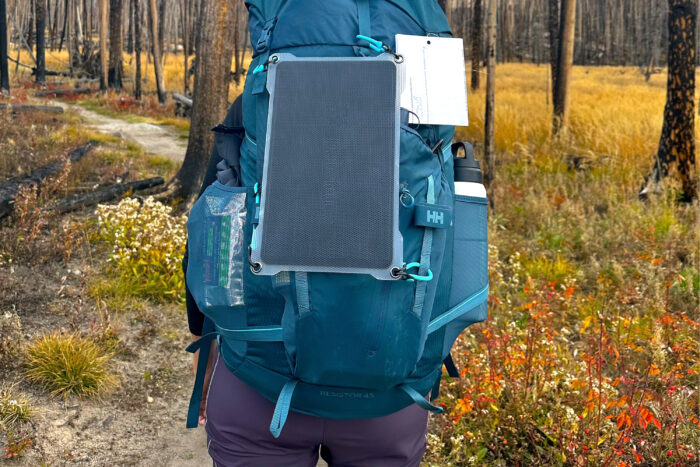At 1 a.m., my carbon monoxide alarm suddenly sounded. The beeping was intermittent yet piercing. I immediately got up, opened all my windows, and retrieved the manual. Still half-asleep, I checked it again while listening intently. To my relief, it was merely a malfunction with the battery unit. Unfortunately, lacking a spare battery to resolve the issue kept me awake the entire night.
This situation allowed me ample time to contemplate batteries and their applications. Typically used in essential equipment like baby monitors, carbon monoxide alarms, GPS units, emergency radios, and various gadgets. Whether at a campsite or on a trail, batteries power items like headlamps, lanterns, heated clothing, and more. Running out of batteries without spares could pose a significant problem if crucial gear loses power.
Even if you possess rechargeable AA and AAA batteries such as those from Pale Blue Earth, you still require a dependable means of charging them. Therefore, having a top-notch solar panel is crucial when camping or embarking on a trail. Predicting when a battery might die is challenging — and if it’s powering vital gear, it could lead to a severe situation.
Encountering the Pale Blue Earth Approach 1 & 2 Solar Panels, specifically created for trails and packed with convenient features, prompted me to test them out. If nothing else, I speculated they might assist me in maintaining a stock of extra batteries ready for the next time my carbon monoxide detector demands a replacement.
In summary: The Pale Blue Earth Approach Solar panels are solar panels compatible with 5V USB-A for outdoor charging. The Approach 1 and Approach 2 offer outputs of 7W and 21W, respectively. Weighing a mere 11 ounces, they are easily transportable on trails or at campsites. Both panels are equipped with a practical utility pocket for storing cables, rubber ties, and more. These solar panels are ideal for backpackers, designed to be robust and withstand rugged use.

-
Dimensions
20cm x 30cm -
Attachment ties included
Yes, 4 -
Charging ports
2 USB-A ports -
Voltage
5V -
Max output wattage
7W, 21W -
Claimed weight
10.9 oz. (Approach 1), 1 lb., 11.8 oz. (Approach 2) -
Verified weight
11 oz. (Approach 1), 1 lb., 11.4 oz. (Approach 2)
-
Functions excellently -
Capable of charging two devices simultaneously -
Outstanding rear panel utility pocket -
Included grip ties are fantastic -
Charging light indicator effectively aids users in positioning panels for full sun exposure
-
Requires attaching or leaning for setup (no stand) -
An upgrade or addition of a USB-C port in the future would be beneficial
Analysis of Pale Blue Earth Approach Panels: From Batteries to Beyond

These solar panels come in a minimalistic and straightforward design. They are flat like a hardcover book, sturdy, and share similarities in concept and design with other solar panels. The package includes the Approach solar panel with two USB ports, a charging indicator, rear utility pocket, an instruction manual, and four grip ties.
Pale Blue’s Approach panels boast minimal packaging, a beneficial aspect for me. They are labeled with ports and come with an easy-to-follow manual. Additionally, each panel has four eyelets (one in each corner) that facilitate easy attachment to a backpack, especially with the included ties.
Pale Blue Earth Approach 1 & 2 Solar Panels: Field Testing
I have put these panels through rigorous testing, from road trips across the state (using solar power from the intense sun on my dash) to extended backpacking expeditions. The Approach 2 from Pale Blue Earth has accompanied me in my trunk for the past 6 months on lengthy drives, weekend hikes, and impromptu mountain excursions.
Although I appreciated having the trifold 21W Approach 2, the Approach 1 (with a maximum of 7W) is more suited to my needs and preferences. In most backpacking scenarios, the Approach 2 proved to be excessive.










